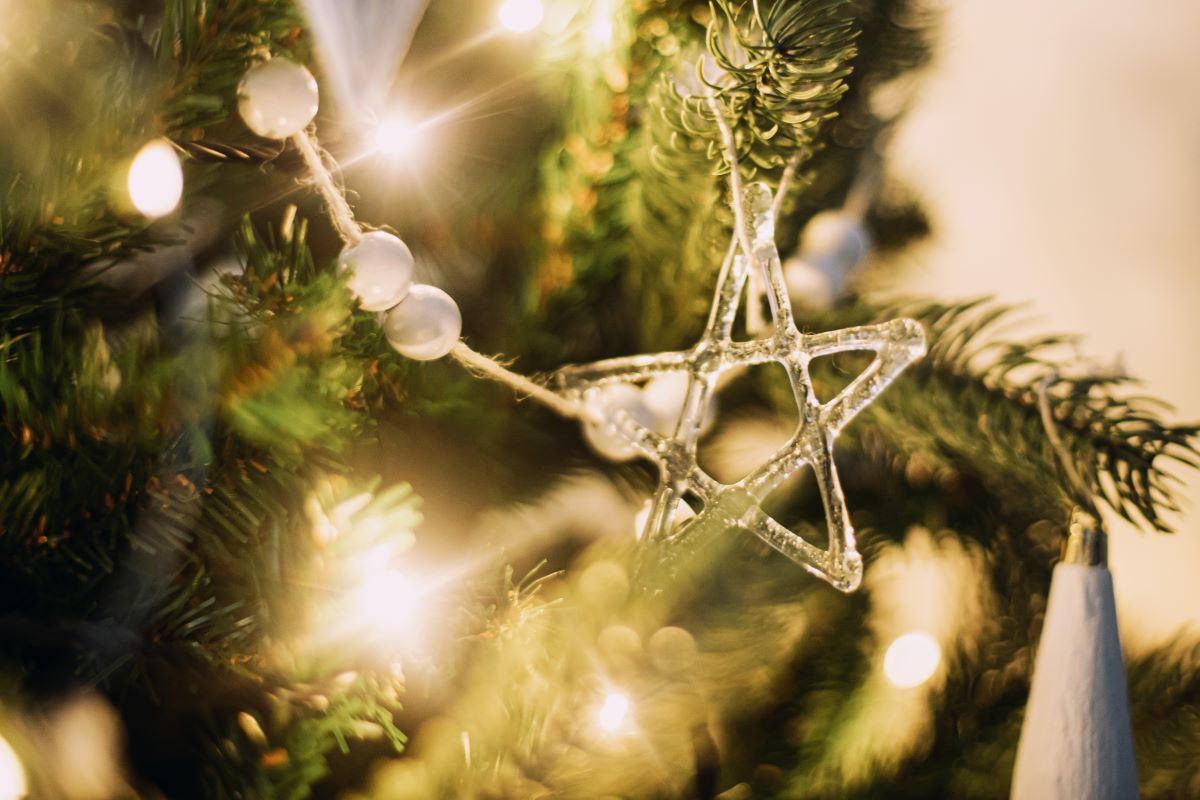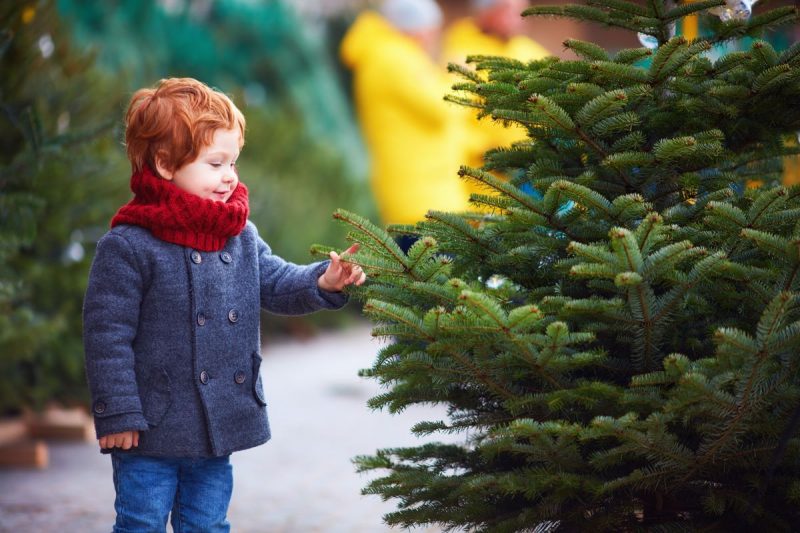When it comes to Christmas trees, we come down firmly on the side of bringing a real tree into our homes. It looks fabulous and smells even better – releasing a sweet piney scent that lets us know it’s time to pour the eggnog and start celebrating the festive period.
So, if you’re new to a real tree, or a seasoned pro who wouldn’t dream of doing without one, we’ve got a few tips to keep it looking good all Christmas long.
Different types of Christmas trees
Picking the perfect tree starts with knowing which variety is going to suit you best. Is it the Norway Spruce, the Nordmann fir or the Lodgepole pine? Each have their own special characteristics that are better suited to different situations. Here are the main pros and cons of each.
Norway Spruce
The Norway Spruce (Picia abies) is known as the traditional Christmas tree. Often seen in Trafalgar square, the Spruce was first introduced to the UK over 500 years ago from Scandinavia. It is gifted to the UK from the Norwegians, although this year, the Norwegians are feeling a little embarrassed with the lack of needles.
The amazing shape and plethora of branches are great for hanging all your Christmas decorations. In line with all the festivities, the Norway Spruce has a truly Christmassy smell that will fill your room with more festive cheer. A downside is that it can also fill your room with needles, as it’s well known for dropping them early. If this is your tree of choice, it’s worth purchasing closer to Christmas, so you’re not left with bare branches come the big day.
Nordmann Fir
The Nordmann Fir (or Abies nordmanniana) is the most popular Christmas tree in Europe. Thought to be the King of all Christmas trees, it’s perfect for celebrating long periods of festivity.
With softer needles and stunning shape, the decoration process is more enjoyable for all ages. However, unlike the Norway Spruce, the Nordmann Fir lacks the same intense festive fragrance. For some families, particularly those who suffer with allergies, it can make this tree the ideal choice for this reason.
But what it lacks in scent it makes up for in looks. Known as the non-drop Christmas tree, the Nordmann Fir firmly holds onto its needles. So, if you want a hassle free, ‘lack of sweeping up needles from the floor’ tree then it’s a partnership made in heaven.
Lodgepole Pine
The Lodgepole Pine (Pinus contorta) is said to be the most ‘realistic looking’ Christmas tree. This large, tall pine is perfect for houses with high ceilings and an abundance of space. If you’re lucky, you might even find one with some pinecones still on the branches.
Its upwards facing needles and branches, makes the tree a good choice for families with young children. But these same features can make decorating the Christmas tree slightly more challenging. However, it’s incredibly bushy displays makes up for that as, even with a few less decorations, the Lodgepole Pine still has the potential to look incredible.
Potted or cut Christmas tree?
Next it’s time to decide whether you go for a potted or cut tree.
Potted Christmas trees
Over the past few years, potted Christmas trees have drastically grown in popularity. This sustainable, greener option means that when the festive period is over, rather than throwing your tree away, you can replant it. Think of it as a reusable Christmas tree, with one positive: it’s real! But like most sustainable options, potted Christmas trees tend to be more expensive. On top of this, they often tend to be slightly smaller than their cut counterparts normally reaching around 4 to 5 feet.
As well as being a sustainable option, this reusable tree doesn’t take up valuable storage space in the loft or garage like its fake counterpart. Instead, you can plant it in your garden until you’re ready to use it again next Christmas.
So, if you’re green fingered and want to do your bit to help the environment then potted is the way forward.
Cut Christmas tree
Cut Christmas trees are planted and grown specifically with the purpose of being cut when they’re needed. They often prove cheaper than the potted option and can range in size from a few feet up to 7 foot or more. So, if you’re looking to create a wow with your tree and get more bang for your Christmas buck, then this is a good choice for you. The only downside is that once Christmas is over, you’re left with a tree that needs recycling. However, many Councils now offer kerbside collection as part of green waste schemes.
Some nurseries even let you cut down your own tree. Like picking your own strawberries, only slightly larger and not edible. Nonetheless, this could be a budding family tradition waiting to happen.
Picking the perfect Christmas tree
Now you understand which tree you’d like to have in your home – here comes the fun part of picking your perfect tree.
There are four key things to consider:
Colour
Check for any brown needles, or dark grey colourings. You want a tree that is green and glossy and full of life. Just like you see in the movies, a perfectly green, healthy-looking tree is what you’re looking for.
Needles
You don’t want a tree whose needle shed has you reaching for the Dyson every day. To make sure the needles are strongly attached run your hand through the branches a few times and see if any fall off. You want a tree with its needles still firmly attached and looking healthy.
Size
Before going to pick your tree decide on its final location in your home. How much height have you got; how wide can it be? Are there any obstacles you need to account for? If you get something too big and bushy (as tempting as this might be) it can dominate a space and make it awkward to move around your room. The last thing you want is someone brushing against the tree and knocking off your carefully placed decorations. Something well-proportioned for the size of your room is going to look so much better than something too big, or too tiny to get noticed.
Shape
Look for a nice straight trunk with a single central leading branch pointing upwards. Avoid any where the top has been removed. You want well-spaced branches that have enough support to hang decorations. Also make sure you see your tree unwrapped before choosing. Stand it upright and give it a twirl to make sure of a nice even spread of branches. Remember that you may need to chop off a few of the lower branches to fit it in its stand. So, think about how the tree will look if it does lose a few of these.
Looking after your Christmas tree
Now you’ve chosen your tree and taken it home, it’s time to give it some TLC to keep it looking healthy.
Caring for a cut Christmas tree
Think of your tree like you do cut flowers, only slightly bigger. Once you get your Christmas tree home, trim about 3-8cm off the trunk. This helps with water absorption as it gets rid of any dry resin which would have formed a seal. Then stand it in a bucket or a trug and give it a good drink of water. If possible, leave it overnight.
When you’re ready to bring it in, remove the net and shake vigorously. This will serve two purposes. The first to dislodge any lose needles. The second to allow the tree to settle into its natural position.
When you do bring it in, you’ll need a stand to place it in. This will keep it stable and should allow you to give it a fair amount of water. When it’s in its stand, make sure it’s straight and secure before decorating.
Try also to keep your tree from a heat source such as open fire, wood burning stove or radiator. Christmas trees don’t want to be too hot or too cold, and away from fluctuating temperatures, that might give them a ‘shock’. They need to maintain moisture so place it somewhere cool, away from a direct heat source that will dry them out. Ideally try and keep your room temperature at 20 degrees or less.
Once the tree is decorated give the stand a good top up with water. Then aim to check and top up the water lever daily. Water equals freshness. Ideally you want about 1 litre of water for every 1 inch of the trunk’s diameter. So, if you’re tree is 4 inches in diameter, you’ll need 4 litres of water.
Caring for a potted Christmas tree once Christmas is over
You’ve spent a vast amount of money on a potted Christmas tree, so ideally, you’d want to reuse it. Slowly get your tree readjusted to the temperature outside. Store it in your garage or a cool room for a few days before placing it outside. When it comes to keeping it in the garden you’ve got two options. Re-plant the tree or keep it in its pot.
Replanting your potted tree allows it to stretch out its roots and pull up water and nutrients from the soil. However, there is a risk of damaging the tree or the root system when the time comes to dig it back up. Keeping it in its pot (or repotting in on to a slightly larger pot) means there’s less risk of damage. However, you will need to remember to give it a feed and regular watering to keep it in good nick for next year.
Happy Christmas from Thames Valley Landscapes
We hope our guide to looking after your tree helps to keep it looking great throughout the festive period.
From all the team at Thames Valley Landscapes we wish you a very merry Christmas and a happy New Year.



